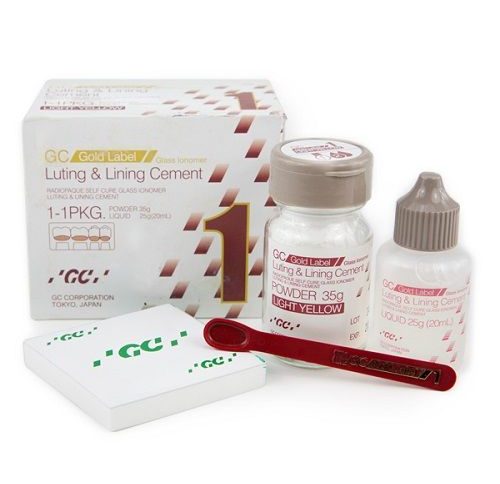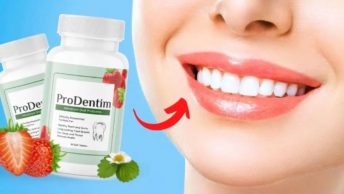For any dental healthcare environment, it is imperative to have the right gc luting cement to make sure that the practice of dentistry is smooth.
For prosthodontic restoration, there are several factors on which success is dependent. These factors include oral hygiene/microflora, design preparation, mechanical forces, and restorative materials. However, the salient reason behind the success is determining the right luting agent and the cementation procedure.
Dental luting agents may be definitive or provisional. This is dependent on their physical properties and the planned longevity of the restoration. There are several kinds of dental luting agents. Some of them have been discussed below. The word ‘luting’ has been derived from the Latin word Lutum. ‘Lutum’ means mud. The dental luting agents provide a link between the restoration and the prepared tooth. They are bonded together using a surface attachment. This attachment might be mechanical, micro-mechanical, chemical, or a combination of all of these.
Some of the dental luting agents have been discussed below:
Zinc Phosphate Cement
The Zinc Phosphate Cement was introduced in 1878. It is among the oldest luting agents and has a clinically successful track record of more than 100 years since its inception. Zinc Phosphate Cement is found as powder and liquid. It sets by an acid-base reaction. The primary constituent of powder is zinc oxide with 2–10% of magnesium oxide. The water content of the liquid is extremely important since it controls the ionization of the acid and affects the rate of setting reaction.
Since the Zinc Phosphate Cement retains the prosthesis using mechanical means; factors such as taper, length, and surface area of the tooth preparation become salient to its success.
The mixing of the cement is performed on a cool slab. This is done in minute increments over a large area. Further, the working time of the cement can be extended by a huge amount and the setting time can be reduced to achieve simultaneous cementation of multiple restorations using the Frozen Slab technique.
The Zinc Phosphate Cement is often recommended for cementation of prefabricated and cast posts, crowns, FPD’s, metal inlays, and onlays. It has several advantages such as good compressive strength, adequate film thickness, and reasonable working time. The Zinc Phosphate Cement can be used in regions of high masticatory stress as well as long-span prosthesis. It has certain disadvantages as well. These are low tensile strength, no chemical bonding, and solubility in oral fluids.
Modified Zinc Phosphate Cements: Copper and silver cement (not widely used), Fluoride cement
Ever since the inception, copper-containing cement has consisted of zinc phosphate cement to which copper (2–97%) was added in the powder. While pure copper phosphate cement was also used, it had a major disadvantage. That is, it discolored teeth and additionally proved to be toxic.
Silver cement consists of a small percentage of silver phosphate. Whereas in fluoride cement, stannous fluoride (1–3%) was added to extend anticariogenic properties to zinc phosphate. However, this cement had reduced strength and was extremely high in solubility due to dissolution.
Zinc Silicophosphate Cement
The Zinc Silicophosphate Cement was introduced in 1878. This cement contains a powder which is a combination of zinc oxide and silicate glass (containing 12–25% fluoride). The liquid is concentrated in phosphoric acid. Zinc Silicophosphate Cement has multiple advantages. The presence of silicate glass brings in translucency, low solubility, improved strength, and fluoride release. However, this cement also has several disadvantages. It has a high initial pH than zinc phosphate cement, so it is not biocompatible. Further, due to its limited working time and coarse grain size, the Zinc Silicophosphate Cement has a high film thickness(88 μm).
Zinc-Oxide Eugenol Cement
Developed in 1875 by Dr. J. Foster Flagg, the Zinc oxide eugenol cement was developed from zinc oxychloride cement. This was done by substituting the liquid with, creosote, followed by eugenol. In 1894, the initial proprietary ZOE product was introduced by Wessler. It was named “pulpol”. Multiple additives have been combined with zinc oxide eugenol cement to improve its strength and reduce solubility. The examples include alumina, silica, ortho-ethoxybenzoic acid (EBA), polystyrene, dicalcium phosphate, rosin, and polymethylmethacrylate.
Due to the addition of polymethylmethacrylate (20–40%) to powder and EBA to liquid, there has been a considerable improvement in strength. Furthermore, the addition of heat-treated fused quartz to the powder has also improved the dimensional stability and strength of EBA cement. One issue is that research has shown that deterioration and breakdown occur even when modified materials are used. Hence, their usage is mainly confined to situations where tooth sensitivity is an issue.
These are some of the most important luting types of cement which are used in dentistry.
Classification of Dental Luting Cements







